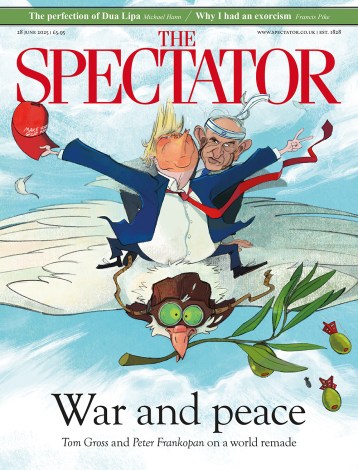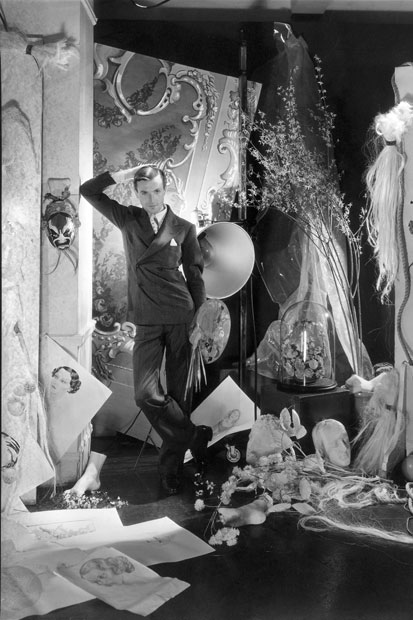The odds were a hundred to one against him. Brought up in bourgeois Bayswater by genteel parents, Cecil Beaton was effete, pink-and-white pretty, theatrical and mother-adored, with a stodgy brother (but a couple of compliant sisters) —a cliché of post-Edwardian sniffiness, a leer through raised lorgnettes.
A humdrum early education followed by Harrow might have formed him into a pliant carbon of his timber-merchant father, but Cecil escaped this. His personality, energy and burgeoning bravery led him far and wide, and often delightfully astray. It took just a few years for him to trample those early 20th-century taboos under his winged heel, and forge his curiosity-fuelled career.
Armed with a Brownie and a box of cellophane, spun-glass wigs, beauty spots and chutzpah, he ditched the rigid formal poses of the period and carved his niche in portraiture and fashion. Swayed by the glamorous sheen of Baron de Meyer’s work, Cecil’s was a fusion of Elsie Mendl’s Louis-the-Rococo, Syrie Maugham’s bleached modernity and the vibrant notes of the jazz age. There were others in this fraternity, Peter Rose Pulham and Angus McBean among them, but it was Cecil who left his hallmark on the period. Stage and film design followed, and then, thanks to an acute ear, tongue and eye for observing human strength or frailty, his writing. What has been largely overlooked, though, is his genius for interior decoration, which an exhibition of his two Wiltshire country houses, Ashcombe and then Reddish, at the Salisbury Museum earlier in the year, and now at Sibyl Colefax & John Fowler, ably redresses.
The first room of Cecil’s I saw was in the mid-1950s. He was by then at the crest of fame and taste, both of which are given rein in these interiors. After war-torn years of dingy walls and rep curtains, the opulence of his Ritz Hotel-Edwardiana drawing-room was breathtaking, and, as I later wrote, ‘walled in crimson velvet, gilt-mirrored and candle-sconced, containing an armada of capitonné crimson damask-covered, tasselled furniture skittering across Savonnerie carpets and gleaming parquet, ceiling-brushing palm trees in Chinese vases, bronzes and bibelots on myriad marble surfaces, and in it, Cecil, a lilac-suited figure in a rose-red bower…’ ‘Well, I think it’s got something,’ he said, in response to my stunned appreciation. I’ll say.
But I was lucky to see that first incarnation, for he was planning a different something; while away in New York designing My Fair Lady, the house was to be transformed. My next visit revealed black-velvet walls with silver-gilt leather borders, Alberto Giacometti bronze lamps, and Jean-Michel Frank’s plaster lanterns hanging above angular banquettes and chairs covered in clashing pink and orange, sky-blue and turquoise tweeds and silks. Years later, after Cecil’s death, I was able to rent the house with this daring décor still intact. It hadn’t dated an iota: if anything, current taste had caught up with it.
On his regular visits to New York during the time I worked on Vogue, Cecil would be installed in rooms he had designed at the St Regis hotel. A far cry from the pastel panelling of its neighbours, Cecil’s suite was daringly modern, with splashy black and white upholstery, vibrant slashes of primary colours, and, as far as I remember, huge photographs — not necessarily his — on white walls. Those primary colours he reserved for indoors. Visiting my ranch in Arizona, his nose twitched on seeing my proudly cultivated tubs of geraniums; then, sopra voce, ‘Do they HAVE to be red?’
At Reddish, his last home, elements of all these earlier décors fused. Cecil’s taste was now surer, perhaps even more serious. There was a final fanfare of Edwardian pomp for the drawing room, but quieter circumstance prevailed in the other rooms. This last house was to be no fantasy, but a suitably workable one, where he and his guests would be surrounded by the best furniture and art of periods that Cecil’s exacting eye had chosen. Any dross was eliminated; only old and new rarities made the cut. I was able to acquire one or two things at the sale of his possessions, memento mori of the man and the magic, but looking now through the Christie’s catalogue one finds, buried among the best of French and English furniture and paintings, more recent names — Picasso, of course, and Tchelitchew, and then Hockney and Warhol. And ‘Lot 473 …Vase and two figures by Giacometti’.
Its counterpart was sold in New York this week for $101 million. The odds certainly weren’t against Cecil.






Comments